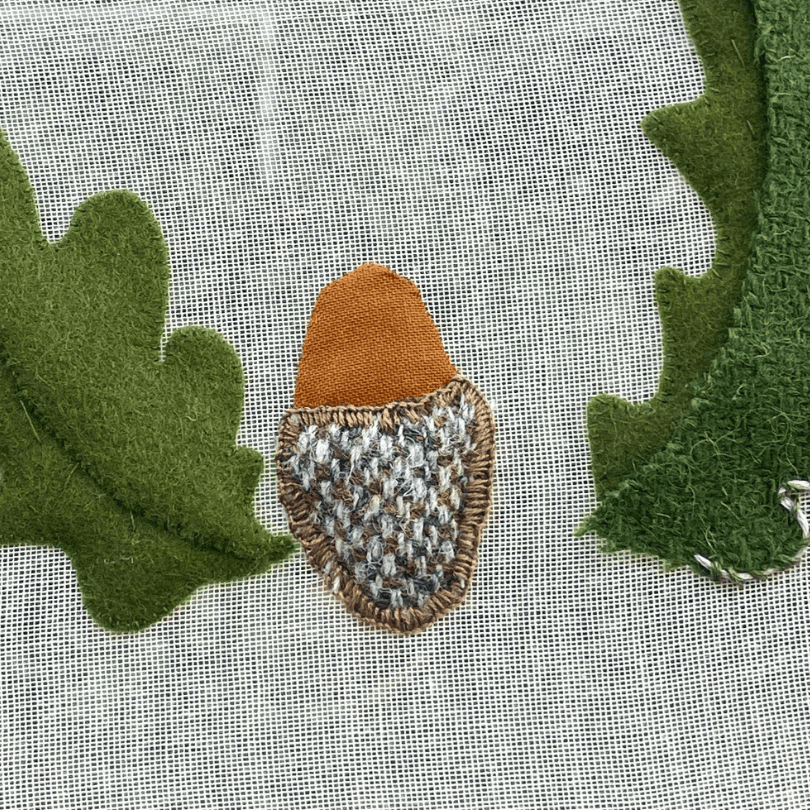
Nearly a year into this blog and I have some embroidery content to talk about. If necessary, now is the time to pick yourself up off the floor…
But I always wanted embroidery chat to evolve naturally in this blog. I didn’t particularly want to replicate my social media posts and newsletters, where I talk about work in progress and the finished results. I have taken this blog off at a tangent and talked a lot about connecting with sights and sounds in nature, much of which inspires my embroidery work.
Now I have some embroidery projects developing which are largely separate from what I’m selling in my online shops. They are slow projects, and I’m using them to learn more about embroidery techniques and designs. All being well, I will have a lot to talk about here.
Today’s post is about a collaborative project that I’ve joined: Lou Gardiner’s Flying Acorn Army, an exhibition inspired by and hosted at Marchmont House in the Scottish Borders. Hundreds of people have already submitted embroidered acorns to accompany Lou’s very fabulous Cape of Creative Courage.
You can read about how this project started on Lou’s blog and follow its progress on herInstagram account:
https://www.lougardiner.co.uk/blog.php
https://www.instagram.com/lou_gardiner_embroidery/
When this project was initially announced last year, I didn’t have enough spare time to work on an acorn piece. But the deadline has been extended to the end of August and I’ve had more time over the summer to get stuck into my own interpretation of Lou’s design.
This first stage was put together according to the guidance on Lou’s blog. A sheer fabric mounted in a hoop, with the inner hoop bound to keep the muslin in place.
Lou provided templates for the acorns and instructions on how to build up layers of felt padding to provide a foundation for stumpwork.
I chose a variety of fabrics to layer over the felt. As you can see, on the left I opted for a top layer of felt too. Whipstitching the padding to the hoop turned out to be pleasingly neat, and felt is so forgiving and doesn’t fray. So I chose to use an extra layer and kept that section tidy at least.
I began with the least challenging fabrics, on the whole. I am not practised at hand applique, so I started with fabrics that I could stitch straight onto the muslin, without turning the edge of the fabric. The felt was easy to whipstitch. I then used a buttonhole stitch to secure the acorn cup, to prevent the tweed (oh gorgeous barleycorn!) from fraying. Similarly, I couched the edge of the second leaf – laying down 6 strands of silvery-grey DMC floss and securing it with 4 strands of one of my favourite green shades (which is 3051 in case you’re interested).
I chose an easy target for the first attempt at applique and tried out hidden whipstitch for the cotton part of the acorn. The curve was indeed tricky. I am pleased with how it turned out but it gave me a lot to think about in terms of capturing wiggly oak leaves.
I’ll be back in August to show you how the rest of the applique went, and hopefully to show you the finished piece all decorated and ready to send. Thanks for reading!



